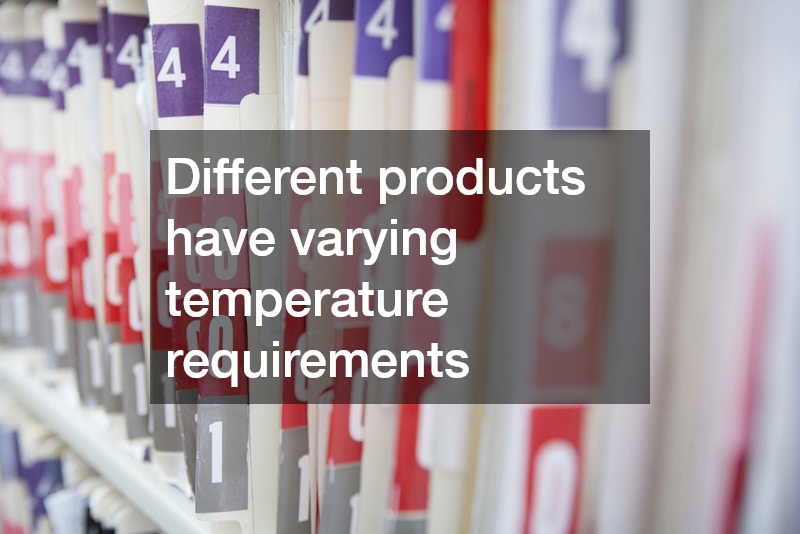Disclaimer: Concordia Research. This site provides general content for informational purposes only.
Explore the crucial role that temperature plays in cold chain management, focusing on its importance, challenges, and best practices to ensure product integrity and safety. As businesses transport a wide variety of temperature-sensitive products, understanding and maintaining the correct temperature throughout the supply chain is a pivotal component of successful logistics.
What Is Cold Chain Management and Why Is Temperature Important?
Cold chain management refers to the process of keeping temperature-sensitive products within a specified temperature range throughout the entire supply chain. This includes everything from production and storage to transportation and final delivery to consumers.
Because many products, such as pharmaceuticals and perishable foods, can degrade if exposed to incorrect temperatures even for a short period, ensuring strict temperature control is essential. The integrity of the entire cold chain can be compromised by minute variations in temperature, making temperature management a priority for all stakeholders involved.
Temperature affects not only the quality and safety of products but also compliance with regulatory standards. In many industries, strict regulations dictate the acceptable temperatures for storage and transport, particularly for pharmaceuticals and biologics. These regulations help safeguard public health and consumer safety by ensuring that drugs maintain their efficacy and that food products do not become hazardous. Therefore, understanding the relationship between temperature and product integrity is vital for companies operating within these sectors, as non-compliance can result in significant penalties and damage to the brand’s reputation.
Moreover, as consumers become increasingly aware of food safety and health standards, businesses are facing growing pressure to demonstrate their commitment to maintaining optimal conditions for their products. The demand for transparency regarding temperature management practices is on the rise, with consumers wanting to know not only that their products are safe but also how they were stored and transported. Companies can enhance their market competitiveness by prioritizing cold chain management and ensuring that their temperature control practices meet or exceed industry standards.
What are the Main Temperature Ranges in Cold Chain Logistics?
Different products have varying temperature requirements, which are critical for their preservation and viability. For instance, pharmaceuticals often need to be kept at specific temperatures, typically between 2°C and 8°C, depending on the product’s unique attributes. Vaccines and other biologics are particularly sensitive, and any deviation from the recommended storage temperatures can render them ineffective. Similarly, temperature-sensitive food items such as dairy products, meats, and fresh produce each have their own sets of required storage temperatures to ensure quality and safety.
In addition to the rigorous demands of pharmaceuticals and food, other categories, such as chemicals, also require strict temperature control. For example, certain chemicals need to be stored within a defined range to prevent degradation or a hazardous reaction. Failure to maintain the appropriate temperature can lead not only to financial losses but also to safety hazards, making temperature compliance critical across various sectors. The diversity of temperature requirements across different product categories underscores the necessity of tailored cold chain strategies that tackle the unique challenges posed by each type of cargo.
Understanding the common temperature ranges helps businesses ensure that their logistics processes align with the specific needs of the products they handle. By identifying and adhering to these ranges, companies can not only improve the quality and shelf-life of their products but also build trust with their clients and stakeholders. This often results in reduced waste and increased profitability, creating a win-win scenario for suppliers and consumers alike.
What Technologies Are Used to Monitor Temperature in Cold Chains?
Technology plays a vital role in cold chain management, providing tools and systems that monitor temperature and alert stakeholders to any deviations in real-time. One of the main technologies used is temperature sensors, which can be placed within transport vehicles and storage facilities to continuously track temperature levels. These sensors often come equipped with alarms that notify personnel if temperatures deviate from preset thresholds, allowing for immediate corrective action. Wireless technologies have further enhanced this aspect of monitoring, enabling remote tracking and better responsiveness across supply chains.
In addition to sensors, data loggers are essential tools in cold chain logistics. These devices record temperature data over time, providing an accurate history of conditions that products were exposed to during transport. This historical data is invaluable for quality control and compliance purposes, as businesses can demonstrate regulatory adherence through documentation. Analysis of this data can help identify patterns and potential weaknesses in the cold chain, paving the way for improvements in logistics practices, risk management, and operational efficiency.
Advanced technologies such as the Internet of Things (IoT) are also becoming integrated into cold chain management. By connecting temperature monitoring devices to the internet, businesses can gather real-time information and perform analytics that drive decision-making to improve temperature control and inventory management. The integration of AI and machine learning into this process takes it further by predicting potential failures or fluctuations and suggesting preventive measures. These technologies not only streamline operations but also enhance overall accountability and trust in the cold chain processes.
Effective temperature management is a cornerstone of successful cold chain logistics. By implementing best practices and utilizing advanced technologies, businesses can improve product integrity and reduce losses. With growing consumer awareness and regulatory pressures, a commitment to rigorous temperature control not only safeguards product quality but also enhances brand reputation. The interconnectedness of temperature, compliance, and operational efficiency illustrates the profound impact proper cold chain management can have in today’s supply landscape. Companies that prioritize their cold chain processes will position themselves advantageously for future challenges and opportunities in the market.




